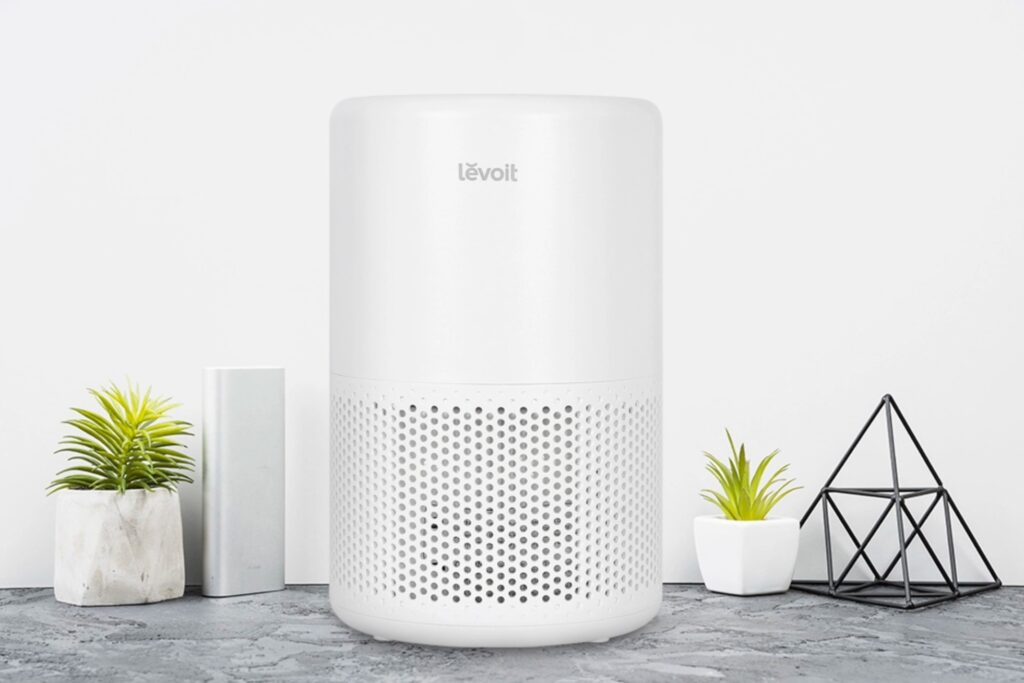In recent years, devastating wildfires have become increasingly common, leaving communities around the world grappling with the detrimental effects of wildfire smoke. These fires release harmful particles and chemicals into the atmosphere, posing serious risks to human health. Fortunately, air purifiers have emerged as a powerful tool to combat the adverse effects of wildfire smoke. This article aims to explore the ways in which air purifiers can help individuals and communities mitigate the impact of wildfire smoke, offering cleaner and safer indoor environments.
Understanding Wildfire Smoke
Before delving into the benefits of air purifiers, it is crucial to understand the nature of wildfire smoke. Wildfire smoke is a complex mixture of gases, fine particles, and volatile organic compounds (VOCs) released during the combustion of vegetation and organic matter. These smoke particles, particularly the microscopic ones known as PM2.5, can penetrate deep into the respiratory system, causing various health issues.
Recent wildfires have wildly reduced the air quality around many US cities, causing weeks-long smog warnings that are not showing signs of letting up. This may be a new normal and something everyone needs to deal with.
Health Risks Associated with Wildfire Smoke
Exposure to wildfire smoke can have severe health consequences. The fine particles and gases in the smoke can irritate the eyes, throat, and respiratory system, leading to symptoms such as coughing, wheezing, shortness of breath, and even respiratory infections. Individuals with pre-existing respiratory conditions, the elderly, and young children are especially vulnerable to these health risks.
For those of us working from home, there is a good chance that you have experienced a reduced quality of air inside your home since the increase in wildfire smoke across North America recently. Because we are now spending so much of our working life in our own homes, it is critical to consider the ways that we can maximize air quality and reduce the risk that wildfire smoke poses for our health.
The Role of Air Purifiers
Air purifiers play a crucial role in reducing the impact of wildfire smoke by filtering the air and removing harmful particles and pollutants. Here are the key ways in which air purifiers can help:
- Particle Filtration: High-efficiency particulate air (HEPA) filters, commonly found in air purifiers, can capture and trap fine particles as small as 0.3 microns with an efficiency of 99.97%. This includes the PM2.5 particles present in wildfire smoke, reducing their concentration indoors and improving air quality.
- VOC Removal: Air purifiers equipped with activated carbon filters can effectively absorb volatile organic compounds (VOCs) found in wildfire smoke. These filters use a process called adsorption to trap and neutralize harmful gases, helping to reduce the odor and toxicity associated with smoke.
- Smoke Odor Reduction: Air purifiers with specialized filters, such as those incorporating zeolite or potassium permanganate, can help eliminate the pungent smell associated with wildfire smoke. These filters absorb and neutralize odor-causing compounds, making indoor environments more pleasant.
- Enhanced Ventilation: Some air purifiers are designed to work in conjunction with existing HVAC systems, promoting better air circulation and filtration throughout the entire space. By improving ventilation and airflow, air purifiers can help prevent the infiltration of outdoor pollutants, including wildfire smoke. Just make sure that you are not needlessly introducing wildfire smoke into your home through your HVAC. In many cases, it is safest to completely turn off your air exchanger (HRV for example) during wildfire smoke events.
Best air purifier: Levoit Core 200S
My favorite air purifier, and the one I am using to beat the wildfire smoke right now, is the Levoit Core 200S. The Core 200S is big enough for most home offices and features some really great smart home integration that allows it to be automated easily. It also has high-quality HEPA filters that are easily found online.
Choosing the Right Air Purifier
To maximize the benefits of air purifiers in mitigating wildfire smoke, it is important to select the right device. Consider the following factors when choosing an air purifier:
- CADR Rating: Look for air purifiers with a high Clean Air Delivery Rate (CADR) for smoke. A higher CADR indicates faster and more efficient removal of smoke particles from the air.
- Filter Efficiency: Opt for air purifiers equipped with true HEPA filters that can effectively capture PM2.5 particles. Verify the filter’s efficiency rating and lifespan to ensure optimal performance. The Levoit Core 200S is a great choice for full HEPA certification.
- Coverage Area: Consider the size of the area you intend to purify. Choose an air purifier with appropriate coverage to effectively clean the air in your space.
- Additional Features: Some air purifiers offer additional features such as smart sensors, air quality indicators, and programmable timers, enhancing convenience and functionality.
Check out our round-up of the best air purifiers you can buy.
Maintaining Air Purifiers
To ensure the continued effectiveness of air purifiers, regular maintenance is essential. Follow these guidelines:
- Filter Replacement: Check the manufacturer’s recommendations for filter replacement intervals and adhere to them. Dirty filters can hinder performance and reduce efficiency. It is also important to pick an air purifier that has filters readily available for a reasonable price. We have seen some recent entrants to the air purifier industry that charge an arm and a leg for their filters. Remember inkjet printers and how companies would jack up the price of ink refills? Well, air filters can be pretty similar if you aren’t considering the costs of a particular air purifier’s filter replacement.
- Regular Cleaning: Clean the exterior of the air purifier and the surrounding area to prevent the accumulation of dust and debris that can impact its performance. Many filters will have a first stage that is intended to block larger debris, so cleaning this out manually can be a good idea.
- Proper Placement: Position the air purifier strategically in the room to optimize air circulation and filtration. Avoid placing it near obstacles that may obstruct the airflow.
Conclusion
As wildfires continue to pose a significant threat to air quality, air purifiers emerge as indispensable tools in combating the adverse effects of wildfire smoke. By effectively filtering out harmful particles, removing odors, and improving indoor air quality, air purifiers offer individuals and communities a means to create safer and healthier living environments. Invest in a high-quality air purifier today and breathe easier amidst the challenges of wildfire smoke.





